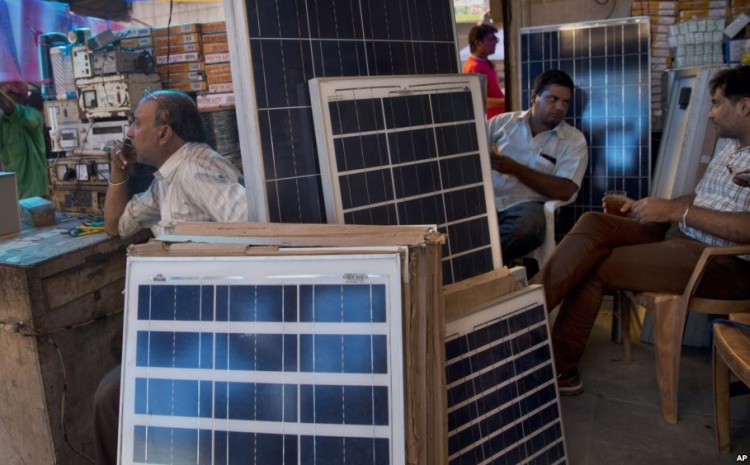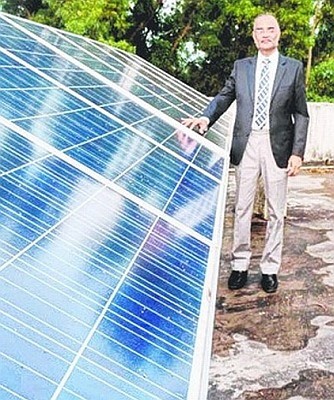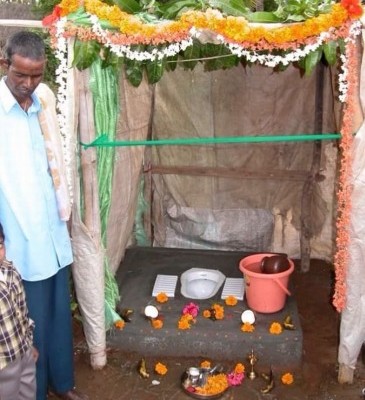India’s solar energy boom – Slow death for local manufactures, Fortune for China

Present solar energy generation capacity of India is only 4 GW. Still, India is targeting ambitious targets. India’s commitment to achieve 100 GW of solar energy capacity by 2022 has proved a boon for everyone except local solar cell and solar panel manufactures.
Fortunately, every aspect related to solar energy generation is in favor of India. A recent study by Deloitte and the Confederation of Indian Industry has estimated India’s solar power potential at 749 GW. Currently, India has not tapped even one percent of it. This year, India’s solar industry growth is expected at 250 percent.
In just next six months, record capacity of 4.8 GW is expected to be up for auction in India’s solar power market. Foreign investors have already poured billions of dollars in Indian market and billions more are expected in next five to seven years.
However, India’s solar developers import all panels from China. The import base of solar panels has seen new heights since the Prime Minister of India has announced commitment to renewable energy generation. In India there are hardly 20-30 solar cell manufacturers and about 50 solar panel companies, and now most of them are dying because all major project developers and contractors buy Chinese made panels at cheaper costs.
While an Indian solar panel cell cost Rs. 22-30 per watt, a Chinese one cost only Rs 10-17 per watt. Similarly, solar panels from a local manufacturer cost Rs. 36 per watt, and Chinese panels cost Rs 30-33. Despite the distance and logistics, Chinese panels are Rs 5-6 cheaper (per panel). Moreover, it doesn’t take more than 30-45 days for consignment delivery.
Prime Minister Narendra Modi has made huge noise for his claims regarding ‘make in India’ campaign recently, but opposite to the expectation of local companies, in case of solar power market, its proving to be curse for India’s local companies. The manufacturers had even filed a petition with the government to impose an “anti-dumping duty” on all cells and panels imported from China, US, Taiwan and elsewhere to provide equal opportunity to local manufactures. The ministry of commerce had recommended a duty of 0.11 to 0.81 US dollars.
As a matter of fact, China, Europe, US all have provision for anti-dumping duty to control the flood of imported panels in the local market to save its own manufacturers. However, India’s policy makers didn’t consider the fate of local manufactures while framing one for solar panel and solar cell import.
The ministry of commerce didn’t take any action on the petition filed by Indian companies, so they again petitioned the ministry to impose an “anti-dumping duty” on imported panels.
“India’s capital Delhi is gearing up for big solar-rooftop projects, but still it has nothing for the local manufacturers. We, as developers, and even state governments will opt for the lowest bidder. Indian manufacturers are expensive. It will take a long time to bridge this gap,” said a manufacturer currently developing rooftop projects on government buildings in Delhi.
There are some examples of companies which have stopped manufacturing cells altogether. Commenting on this grieve situation for local companies, Arun Mishra, member of the Solar Energy Society of India and vice-president of a solar products manufacturing company, said, “We have the same technology. In fact, our products are of superior quality but the government has put no checks on imports. I read with great interest Delhi’s draft solar policy –of installing 2 GW by 2025–but will it all be with imported panels? We have mailed the Delhi government our concerns.”
Indian made panels are limited to only government projects under Jawaharlal Nehru National Solar Mission (JNNSM). The JNNSM has made it mandatory to use locally made products.
On the top of that, US’s reservation regarding India’s local content requirement under JNNSM have also faced protest from activists. According to Pujarini Sen of Greenpeace India, “We, as developers, and even state governments will opt for the lowest bidder. Indian manufacturers are expensive. It will take a long time to bridge this gap,” said a manufacturer currently developing rooftop projects on government buildings in Delhi.”
There is still time for Indian government to reconsider interests of country local manufactures. If China can afford to provide cheap products after bearing import duties over manufacturing, then certainly its possible to do that in India as well.


